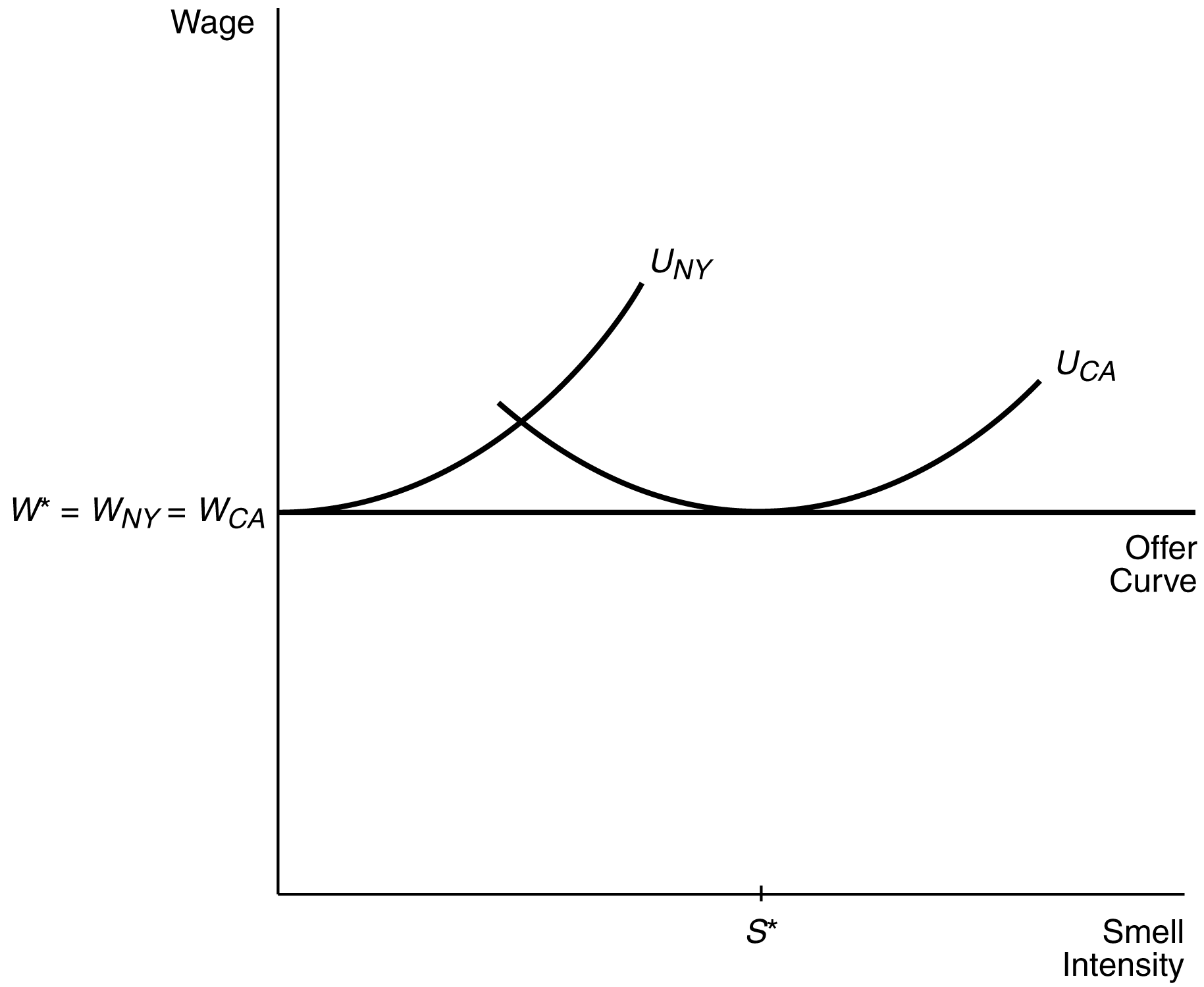
4. Is the following statement true, false, or uncertain? Explain.
"If a married woman's husband gets a raise, she tends to work less, but if she gets a raise, she tends to work more."
Answer: Ignoring the question of joint labor supply decisions, if a married woman's husband gets a raise, that raise (to her) has an income effect. This increased income without a corresponding increase in her wage rate tends to induce her to work fewer hours. However, if her wage rate rises, she will experience both an income and a substitution effect, and if she already works, theory cannot predict which one is dominant. If she is out of the labor force, a wage increase will increase her chances of labor force participation.
The text pointed out, though, that spouses may make their labor supply decisions jointly. For example, if the husband's wage increase caused him to work more, the wife may also decide to work more if they are complements in household production (or consumption). Thus, the answer to this question really depends upon whether one assumes the two spouses have household productivities that are interdependent; if so, they must make their labor supply decisions jointly.
6. Several studies have indicated that for prime-age males, the income effect of a wage increase tends to dominate the substitution effect. Other recent studies point out that hourly wages tend to rise over the early stages of the life cycle (the young receive lower wages than the middle-aged) and that young males tend to work fewer hours than middle-aged males, other things equal. Employing a theory of life-cycle allocation of time, explain the apparent discrepancy.
Answer: Studies showing that for prime-aged males the income effect of a wage increase tends to dominate the substitution effect look either at wage increases that have occurred as society has become wealthier and more productive or at wage rates across individuals in a population. In both cases there are both substitution effects and income effects of wage changes. However, studies of the life-cycle effects of lower wages in the early stages of one's working career with higher wages later on are examining these wage-change effects over an individual's lifetime, holding constant the individual's expected lifetime wealth. With these studies there is a substitution effect – leading to more work as wages rise – but no corresponding income or wealth effects. The latter studies are in the pure life-cycle mode of analysis, where at a given time individuals have an expected lifetime wealth and also face predictable changes in their wage rate as they age.
8. Suppose that, under state law, the financial settlement in a divorce case that does not involve dependent children depends upon the economic contribution each marriage partner made up to the date of divorce. Thus, if the wife earned an income equal to her husband's throughout the years, she would be determined to qualify for half of the assets at the date of divorce. Based on what you have learned in Chapter 7, how could an equitable settlement be determined in the case of a woman who stayed home, raised the family's children, and never worked for pay?
Answer : A wife who did not work for pay nevertheless contributed to the family's income by performing household production services that would otherwise have had to be purchased in the market at some cost. Put differently, a woman who performs household services saves the family money that it would otherwise have had to spend. For a discussion of how these services can be valued, see Example 7.2.
2. Statement 1: "Business executives are greedy profit maximizers, caring only for themselves." Statement 2: "It has been established that workers doing filthy, dangerous work receive higher wages, other things equal." Can both of these statements be generally true? Why?
Answer. Both statements can be simultaneously true. If workers are informed about job hazards and have a choice about the jobs they take, their behavior will force even the most greedy executives to pay higher wages for filthy, dangerous work. Even the greediest profit maximizer must obtain a work force, and to do so must pay a wage that workers will accept. If workers have alternative job offers that pay the same wage but offer better working conditions, they will accept those offers and turn down work at the more dangerous or filthy workplaces. Their behavior then will force owners to either pay the compensating wage differentials or clean up the workplace.
Draw a diagram using isocost and indifference curves that depicts the situation. (The New York and California isocost curves are the same, but their indifference curves differ.) What level of perfume smell is there in the New York factories? In the California factories? Is there a wage differential between the California and New York workers?
Answer: See the figure below. The California workers are paid exactly the same as the New York workers. This wage equals W*. The level of smell in California is S*; in New York it is 0.
